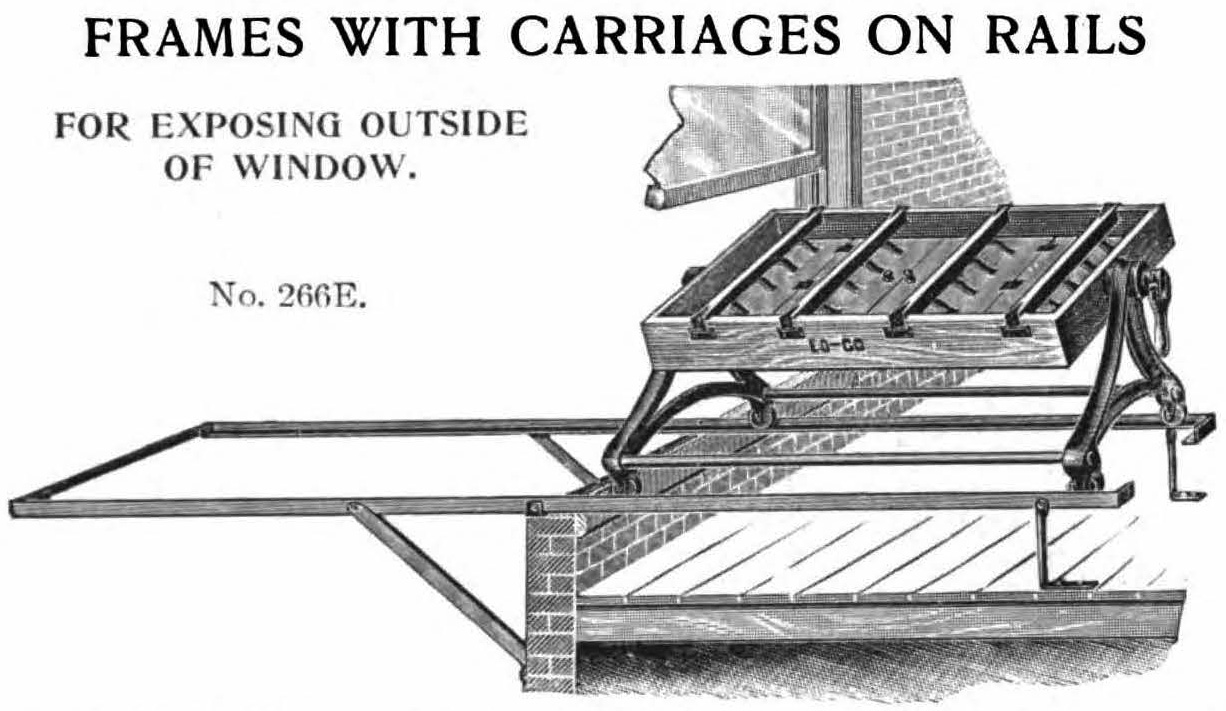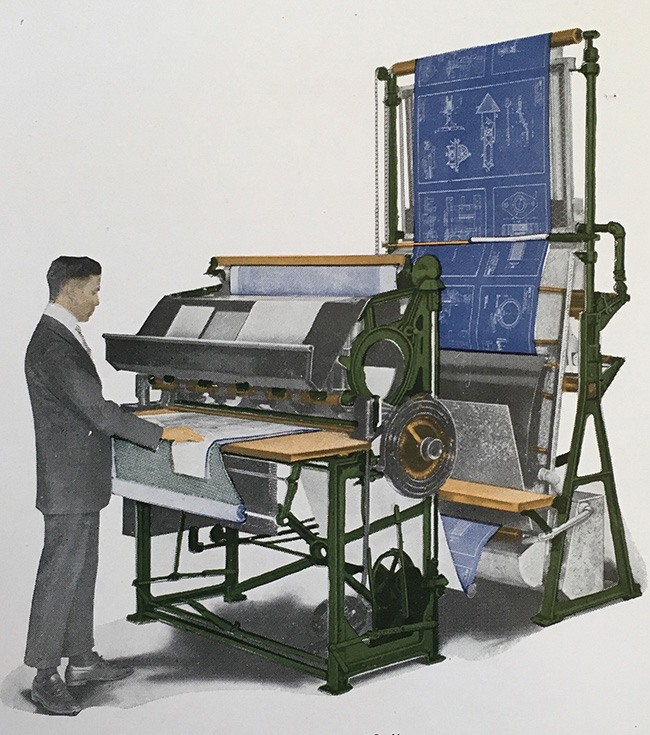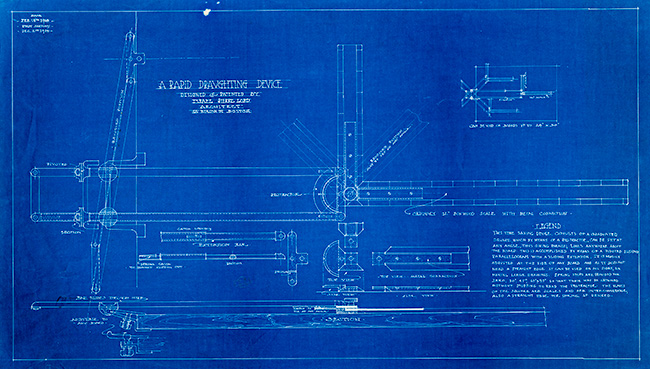Cyanotype
Today, a thing lingers as a metaphor. The University of Houston presents this series about the machines that make our civilization run and the people whose ingenuity created them.
I just looked up our word blueprint. Today, it's "a design plan or any kind of technical drawing". But I go back to 1948 when a man paid me ten dollars to make a working drawing of his pipe layout. I drafted it with pencil and T-square on translucent white paper. Then, we ran my drawing through a copier. What came out were white lines on dark blue paper. A lifetime ago, my blueprint was literally blue.
Israel P. Lord, "A Rapid Draughting Device," blueprint, circa 1908. Courtesy MIT Museum. Click on the image to see the drawing full size.
The person who invented blueprints is a surprise. He was John Herschel, son of William Herschel, who discovered the planet Uranus. John was also a major astronomer. He built upon the work of both his father and his aunt, Caroline Herschel. Caroline, who created the first great catalog of nebulas.
Astronomers need to show people what they see through their telescopes. So John turned to the problem of recording images. First, he invented one of the earliest cameras. (But that's a story for another day.) Then, in 1842, he created the process behind blueprints. He treated paper with a compound of two iron-based chemicals. Expose this paper to light, and it turns blue. He called the result a cyanotype.
To use it, he laid the paper in the sun, behind an object that blocked out some of the light. That left a negative image of the object. He first exposed things like his hand, or a leaf. Then he rinsed out the remaining chemicals, and the picture remained.
Botanists soon made cyanotypes a tool for recording plants. But engineers kept hiring low-level draftsmen, called tracing boys, for the tedious work of copying mechanical drawings. Not until the 1870s did they see that they too could put this wonderful new paper to use. They built special frames that let sunlight shine through their drawings onto this paper. That's how engineers made blueprints until blueprint copy machines were perfected -- just before WWI. Then they became standard equipment.

A device for making blueprints in a window. From a 1910 Dietzgen Catalog. Image courtesy of the MIT Museum.
So what about our word cyan? It comes from the Greek kyanos (κυανοσ). That meant a kind of dark gunmetal blue. Today we think of cyan as the light blue ink in our computers. Well, language mutates. British schoolboys studied ancient Greek, so Herschel chose the old word kyanos for his new paper. But Greek usage had, even then, shifted kyanos to mean any blue color. (Like our own word blue. We use it to describe the sky, the ocean, or dark ink.) So the old meanings of both kyanos and blueprint are now lost.
And, three years after I made that drawing, I was working for Boeing. There, the black on white diazo process had already replaced blueprints. So I'd ridden the cusp of a language shift. In a blink, blueprints were things of the past. But the word, already imprinted upon us, had to survive. And so it remains. But with that lovely dark-blue color now washed from our memory.
I'm John Lienhard at the University of Houston, where we're interested in the way inventive minds work.
(Theme music)
See the Wikipedia articles on Blueprint, Cyanotype, White-print, John Herschel, William Herschel, and Carolyn Herschel. See also, my older episodes on Blueprints, John Herschel, and Carolyn Herschel.
See, also, this article on blueprints and cyanotypes https://herreshoff.org/2020/07/hmco-blueprints-and-cyanotypes/
I am indebted to Jonathan Duval, Asst. Curator, MIT Museum, for his in depth knowledge of blueprinting and its history. And to Dr. Theocharis Baxevanis for his help with the history of the word κυανοσ.
The two chemicals used by Herschel to make cyanotype paper were ferric ammonium citrate and potassium ferricyanide.
Actually, while Herschel chose the Greek root word to name his new paper, he actually referred to the color as Prussian blue, which is very close to the actual color of blueprints. See: Engines episode 2254.
I refer here to diazo as a black on white medium. Actually the original diazo process was blue on white, although it also existed with the image in black or sepia.
For a gorgeous set of blueprints, see: C. Gray and J. Boswell, Blueprints: Twenty-Six Extraordinary Structures. NY Simon and Schuster, 1981

A 1918 commercial blueprint machine. Image courtesy of the MIT Museum
This episode was recorded on Friday, April 22, 2022 which just happens to be the day before the 180th anniversary of Herschel's invention of the cyanotype process. It was first aired on May 16, 2022.
